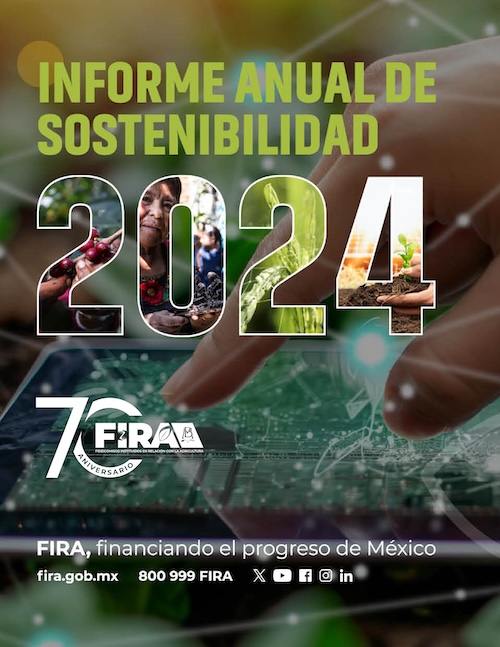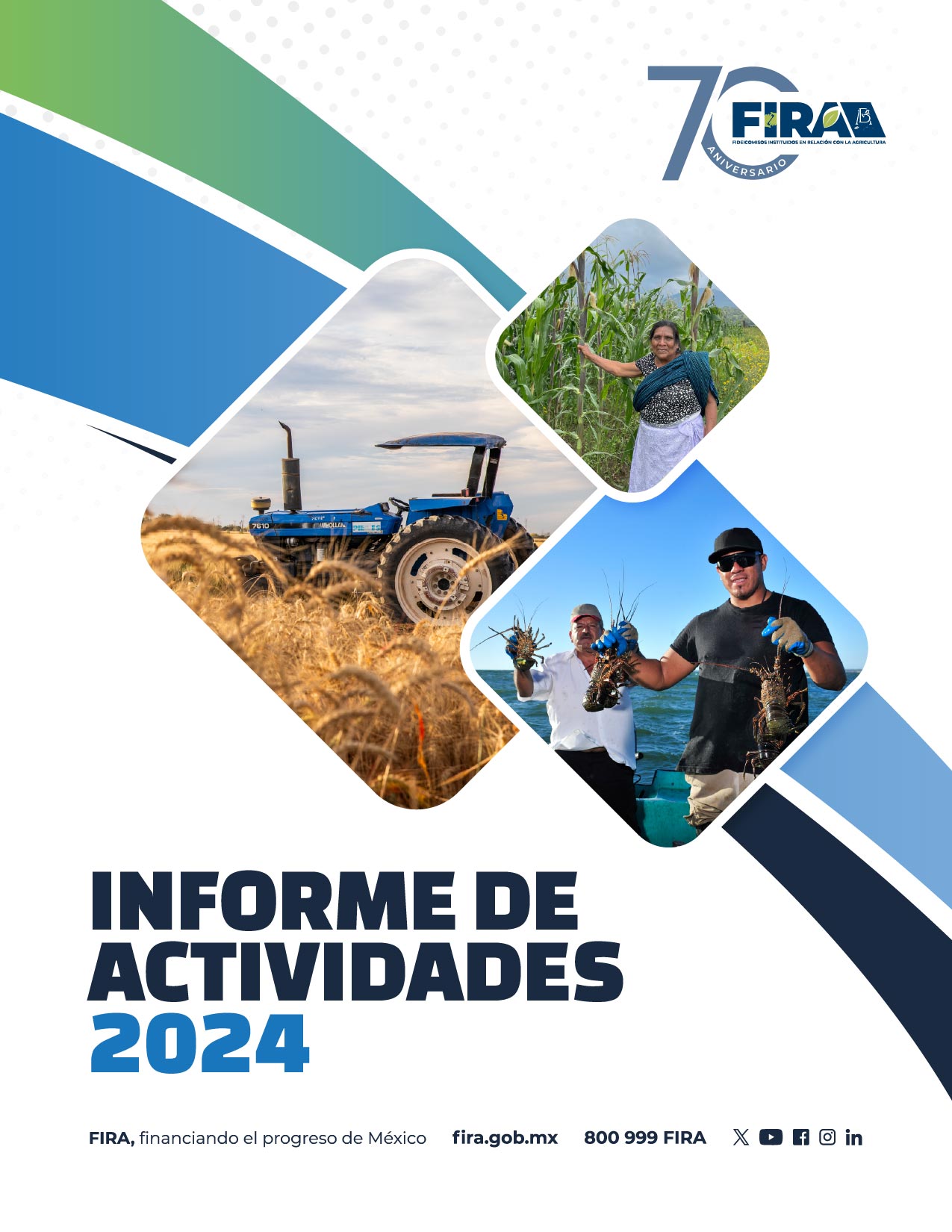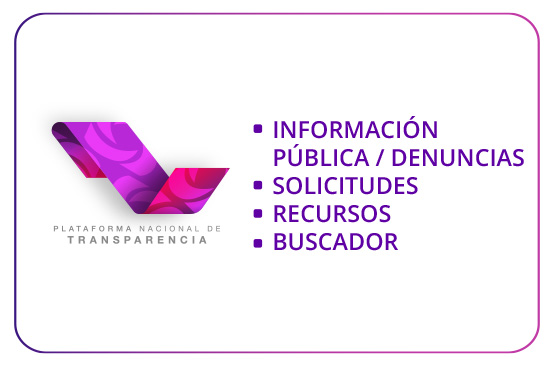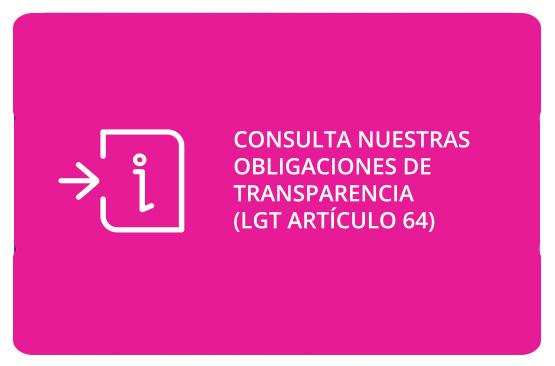FIRA
Established in 1954 by Mexico's federal government, Trust Funds for Rural Development (FIRA) is a second-tier development bank that offers credit and guarantees, training, technical assistance and technology-transfer support to the agriculture, livestock, fishing, forestry and agribusiness sectors in Mexico.
Originally FIRA was established with the creation of FONDO (Fondo de Garantía y Fomento para la Agricultura, Ganadería y Avicultura). Subsequently, three other trusts were created and integrated to fulfill FIRA's current structure. These trusts and their respective year of creation are as follow:
- FONDO (1954) (Fondo de Garantía y Fomento para la Agricultura, Ganadería y Avicultura): Focused on mobilizing resources to the primary sector through short-term financing, targeted for working capital.
- FEFA (1965) (Fondo Especial para Financiamientos Agropecuarios): Financing, subsidies and other services for production, recollection and distribution of goods and services through long-term financing for the acquisition of machinery, equipment, installations, etc.
- FEGA (1972) (Fondo Especial de Asistencia Técnica y Garantía para Créditos Agropecuarios): Identification, evaluation, guarantees, technical assistance, supervision, training and technology transfer services targeted to improve sector's development and credit payback.
- FOPESCA (1989) (Fondo de Garantía y Fomento para las Actividades Pesqueras): Focused on channeling FIRA's resources towards the fishing sector
Organizational Structure
FIRA has an extensive network of 131 offices throughout Mexico, more than 40% of which are based in communities with fewer than 50,000 residents. FIRA's field offices and headquarters include a staff of more than 1,000 agricultural and finance specialists with a deep knowledge of Mexico's farming conditions and producer capabilities.
These specialists conduct a broad range of activities from economic and sectorial studies, feasibility analyses of the projects, supervision, implementation and training to farmers, risk management and technology development, among many others.
In order to meet clients' needs in a more effective, timely manner, FIRA's offices are structured geographically as follows:
- Headquarters in Morelia, Michoacán.
- Office in México City
- 5 Regional Offices
- 31 State Offices
- 88 Local Offices
- 5 Technology Development Centers
FIRA is governed by a board of directors comprised of representatives from the Federal Government, regulatory bodies, commercial banks, agricultural industries, and a wide array of agricultural organizations representing small and big farmers. Throughout its history, FIRA had experienced much greater management continuity than most public sector entities in Mexico. It is seen as a highly professional and technical organization with a reputation for high integrity, and, accordingly, enjoys greater insulation from outside political manipulation.
FIRA's organizational structure is founded in seven administrative areas and one internal regulatory unit.
Products & Services
FIRA offers a diverse range of products and services to support the development of the rural sector. It provides short-term and long-term credit in pesos and US dollars through financial intermediaries at competitive interest rates. Credit guarantees are provided to banks as a way to share the risk with lending institutions and to facilitate access to bank credit by rural producers. FIRA also uses financial derivatives and structured financing to manage the risk involved in everyday operations.
Among the broad range of products and services offered by FIRA, we find:
- FIRA Credit
- Medium term credit (2 years max) for working capital.
- Fixed investments up to 15 years. For forestry and long maturity projects it can be extended up to 20 years.
- Short term credit for the commercialization of goods and services, for up to 6 months.
- Rural Financing
- This product's objective is to foment any other economic activity, different from the agricultural, forestry or fishing activities, in rural Mexico. For instance: transportation, distribution, warehouses, bakeries, general stores, etc.
- FIRA Guarantee
- Offered to the traditional banking Institutions and other financial intermediaries, in order to facilitate the access to producers and/or businessmen to the FIRA's financing programs by complementing their guarantees for feasible projects in the agricultural and rural sectors.
- Structured Financing
- Offered to the traditional banking Institutions and other financial intermediaries, in order to facilitate the access to producers and/or businessmen to the FIRA's financing programs by complementing their guarantees for feasible projects in the agricultural and rural sectors.
- Special programs
- These are specially developed schemes to address particular topics, from financial support to sugar producers to Credit Unions schemes.
- Technologic subsidies
- Management training and technology transfer
- Integral Technical Assistance Services
- Strengthen Economic Organizations and Enterprises
- Strengthen Financial and Management Competencies of Financial Intermediaries
- Expansion of the Business Promotion Structures with FIRA
FIRA offers several types of subsidies. To encourage long-term financing in Mexican pesos to small agricultural producers at favorable rates, the institution provides financial intermediaries with subsidies to cover the difference between the rate charged to them by FIRA and the lower rate they eventually charge the end borrower. Also, as an incentive to provide credit to small borrowers, FIRA provides financial intermediaries with subsidies to help cover transaction costs incurred by serving those with low credit levels. Subsidies, in the form of reimbursements and vouchers for training and assistance related to technology development, are also provided to rural producers.
Finally, FIRA provides financial and technical research and consulting services, which includes identifying new business opportunities for rural producers and providing them with market data.
FIRA through history
FIRA's success can only be understood if we analyze the several components of its history. Only then the successful story of FIRA in Mexico's financial system will be clear.
It is possible to break down FIRA's history into seven stages starting in its creation in 1954. First, it is important to mention that in almost 65 years of history, FIRA has had eight General Directors as follows:
| GENERAL DIRECTOR | PERIOD |
|---|---|
| Salvador Lira López | 1955 - 1965 |
| Horacio García Aguilar | 1965 - 1982 |
| Antonio Baca Díaz | 1982 - 1990 |
| Guillermo Vázquez Rodríguez | 1990 - 1998 |
| Francisco Meré Palafox | 1998 - 2007 |
| Rodrigo A. Sánchez Mújica | 2007 - 2013 |
| Rafael Gamboa González | 2013 - 2019 |
| Jesús Alan Elizondo Flores | 2019 - Today |
Throughout these 65 years FIRA has experienced various phases, from a creative period, one full of challenges in terms of gaining the banks' and producers' recognition as a solid, reliable credit Institution. It was a time full of questions and doubts from banks, producers and even the government. "...it was about a new, never- seen operative system in México and the world, so it required constant improvement and modifications, by observing the reaction of the commercial banks and our main beneficiaries..."
Followed later on by "the stabilizing development stage". During this stage the Institution consolidated its basic operations and started an aggressive growth strategy. A fundamental change during this time was the expansion of resources that FIRA was able to operate, shown through the availability of International funds, such as the US program ALPRO, created by President John F. Kennedy in order to promote multilateral programs for poverty eradication in Latin America. This expansion leaded to the creation of the Fondo Especial de Financiamientos Agropecuarios (FEFA), in 1965, in order to fulfill the highest mission of the Institution.
Throughout the yeasrs, FIRA continued to implement its expansion strategy, but also focused on defining FIRA's particular operative characteristics. In this period, the creation of the Fondo Especial de Asistencia Técnica y Garantía para Créditos Agropecuarios (FEGA) in 1972, allowed to broaden the reach of FIRA's products, such as guarantees and technical assistance. During these years, and due to the creation of FEGA, several programs were created and it allowed for greater innovation in FIRA's financial operations. Later on, the Fondo de Garantía y Fomento para las Actividades Pesqueras (FOPESCA) was created.
More recently it is important to mention FIRA's redesign toward a sustainable Institution in a global economy context, where the agricultural sector has feced new challenges and opportunities.
It is important to recognize that FIRA has transformed into a dynamic, reliable Institution capable of adapting to a very changing, volatile environment.
FIRA today
Nowadays, FIRA's operations are aligned focused on several approaches, to fulfill FIRA's objective to stimulate the agricultural sector in México, as follows:
- Focus on smaller producers with no access to credit lines.
- Strengthen projects' structuring by offering training and technical assistance to small producers' projects.
- Broaden funding flow through the participation of rural private financial intermediaries.
- Promote a gradual private financial intermediaries financial independence, so they can provide funding with their own resources to producers with an existent credit history.
- Preserve Institutional assets.
The history of FIRA is still being written. FIRA is an institution characterized by innovation, trust, and leadership. It is a success story; however, there is a lot to be done for the agricultural sector and the rural economy in México. In order to build a more prosperous country, FIRA faces the challenge of maintaining itself as a leading organization in the Mexican financial system.


 CDT Tezoyuca
CDT Tezoyuca CDT Tantakin
CDT Tantakin CDT Salvador Lira López
CDT Salvador Lira López CDT Villadiego
CDT Villadiego CDT La Noria
CDT La Noria Informe Anual de Sostenibilidad
Informe Anual de Sostenibilidad Informes de
Actividades
Informes de
Actividades
